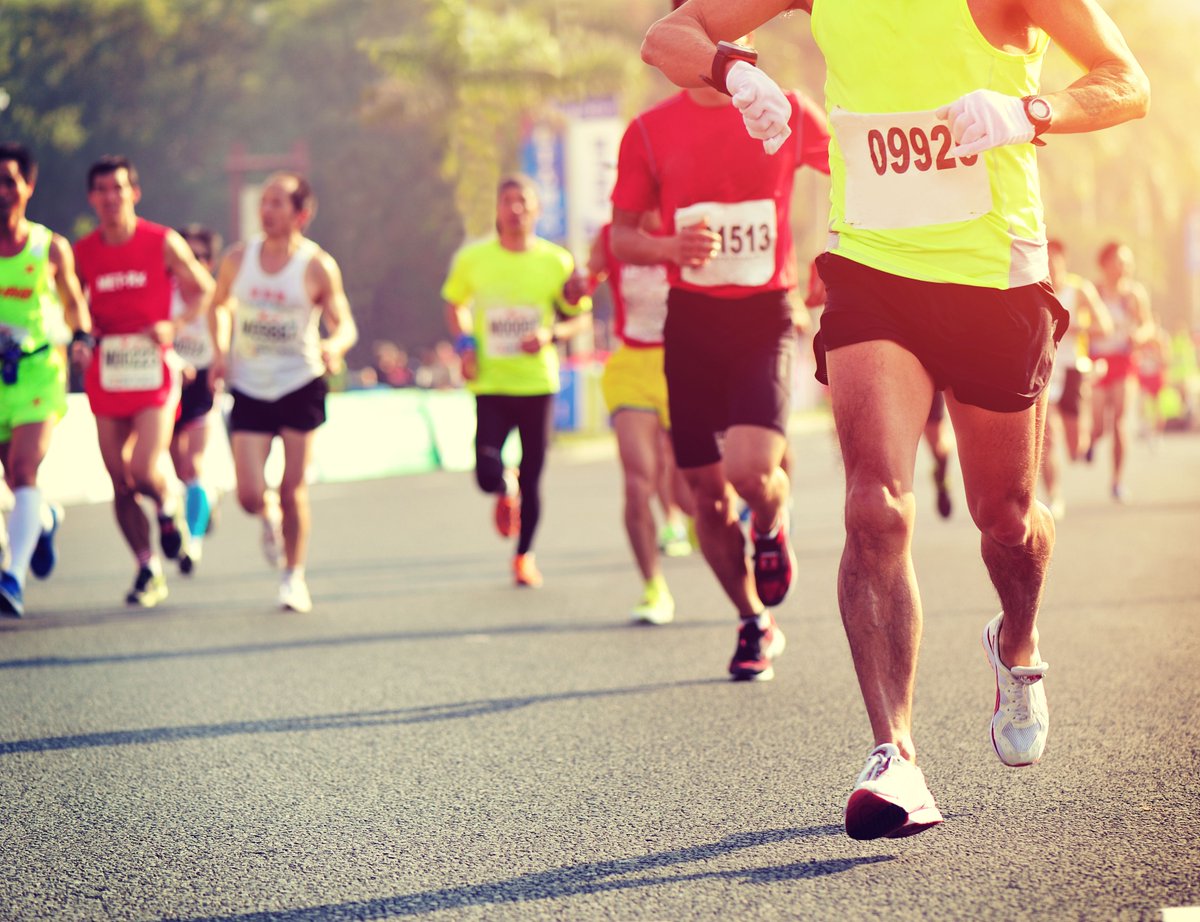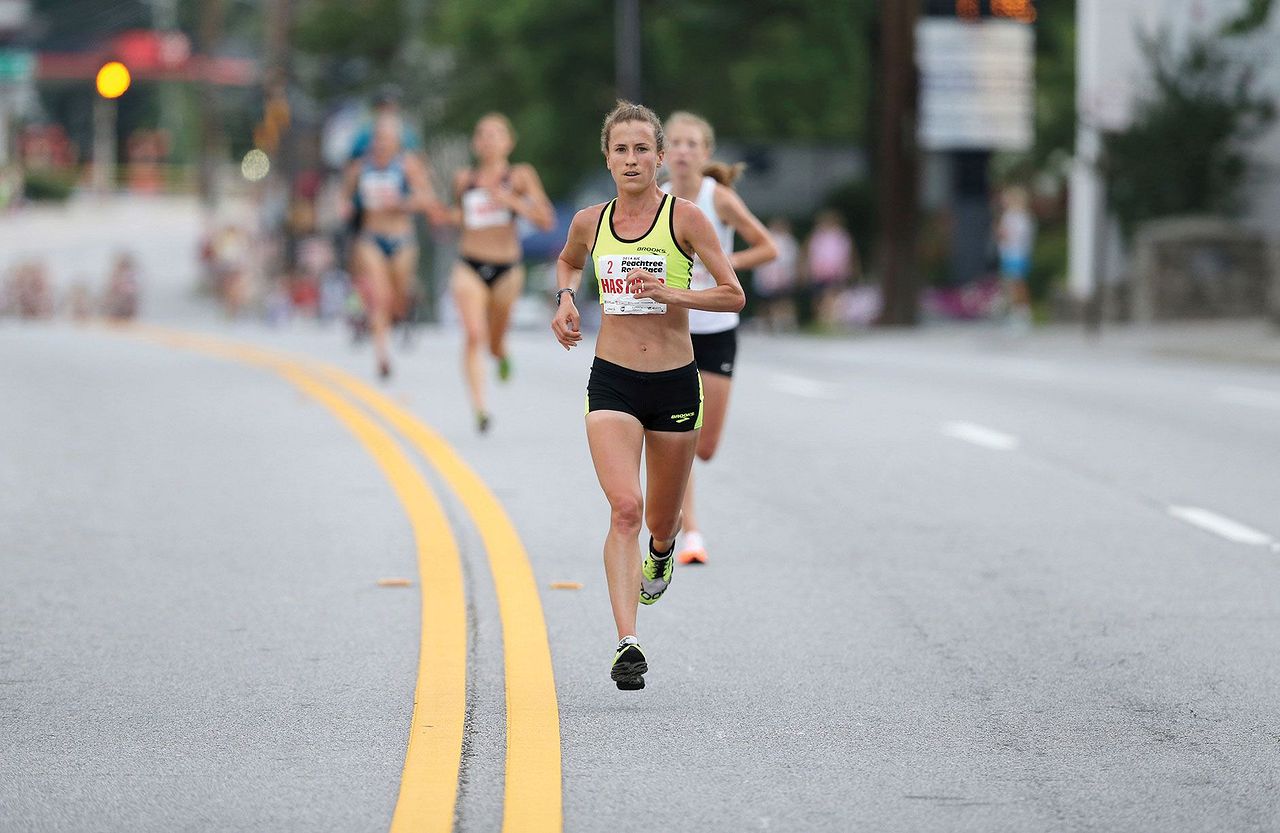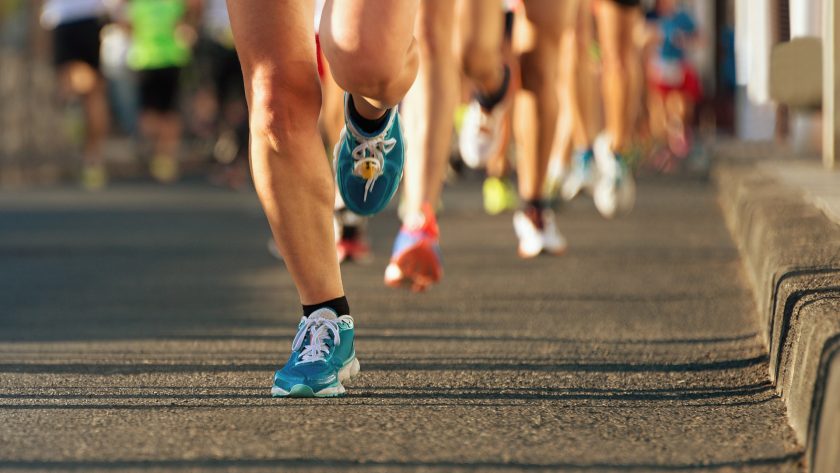Distance: 21.0975 kilometers . Goal: The main thing is to arrive reasonably alive.
The first half marathon is a worthwhile goal for all ambitious hobby runners who occasionally like to run but have never taken part in such a competition.
Before you venture into the “big” marathon and end up in the first aid tent after painful, never-ending kilometers, it is worth starting small.
A half marathon is also a worthwhile goal without the preparation required for a marathon. No wonder that half-marathons are very popular with amateurs in particular, and can be done by everyone.
Although the distance in a half marathon is only half as long as in a real marathon, you shouldn’t rush into a half marathon without adequate preparation .
Instead, it is important to prepare for the shorter distance in good time. If you approach your first half marathon with a plan and brain, you have a good chance of crossing the home straight with a satisfied smile.

Am I ready for a half marathon?
For a successful half marathon start you need strong motivation, a healthy heart and a good training plan. The motivation is already certified by the fact that one deals with training plans for the half marathon preparation.
Since the heart and circulation are strongly challenged during the preparation and of course also during the half marathon, you should be checked by a doctor before starting training. If your health plays along, you now have to aim at the target and take the appropriate steps to prepare for the 21.1 km route.
A half marathon sounds feasible at first, but requires just as thorough preparation as a real marathon. While a slow 10 km run is not a problem for most amateur runners, many untrained people buckle on the 21.1 km route. If you start running “just like that”, you will quickly find that it makes a difference whether you run 10 km or 20 km.
The good news is: With a preparation phase lasting several weeks, a half marathon is easily feasible for recreational runners . However, you shouldn’t plunge into the half-marathon adventure as an under-trained.
Ideally, you have been running about two to three times a week for at least six months and can run for 60 minutes at a time at a relaxed pace.
In other words: you can maintain a certain performance for as long as possible. A solid basic endurance forms the basis of the half marathon preparation , on which one can now build.
If you are new to running, you should try the 10 km distance first, as this is also a great challenge that can be mastered after just a few weeks of preparation.
21.1 km half marathon: The preparation
Going back from the start day of the half marathon, around 10, better 12 weeks of preparation time are necessary.
This more or less long preparation phase makes it clear that a half marathon is not an event that you should take part in spontaneously, but must be carefully planned.
Anyone who wants to approach the half marathon distance as a hobby runner has to train long runs and get used to the race pace in the preparation phase.
Because a half marathon has nothing to do with the leisurely, relaxed jogging laps at a comfortable pace. The training consists on the one hand of many long, rather slow endurance runs, which contribute to the development of the condition and optimization of the energy transport to the stressed muscles.
On the other hand, the half marathon preparation also involves working with different intensity levels and speed units. Intervals, driving games and increases set new training stimuli and stimulate the pace of competition.
Speaking of competition pace: At an international level, the top pace in half marathons is three minutes per kilometer , which equates to a time of around one hour and an average speed of 20 km / h corresponds to.
The Eritrean long-distance runner Zersenay, who ran the fastest time of 58:23 in Lisbon on March 21, 2010, is in first place on the world’s best list. In the women’s category, the Kenyan long-distance runner Joyciline Jepkosgei took first place. With 1:04:52 on April 1st, 2017 in Prague, she set a new record on the route of 21.0975 kilometers.
Half marathon beginners should be happy when they cross the finish line healthy and happy. In fact, the running time is of secondary importance in the first half marathon. The recognition from family, friends and colleagues is also certain when crossing the finish line.
However, such a competition also arouses personal ambition, so that you want to improve until the next time and run the distance in a shorter time. For amateur runners, the half marathon is therefore an ingenious discipline to lure the body out of its reserve and to get a little more competitive character in the recreational sport .
Tempo and target times
The half marathon pace for beginners is around 6:38 minutes per kilometer, while professionals only need 5:41 minutes. Half-marathon beginners therefore need around 140 minutes or 2:20 hours for the 21.1 km distance.
Advanced skiers reach their destination in around 120 minutes, i.e. 2:00 hours.

A time of less than 2:20 can be achieved with the appropriate preparation. The realistic running time, however, depends on the individual fitness. In the first half marathon, however, the calculation of possible target times should not be in the foreground. After all, a distance of 21.1 km is already an official challenge that has to be overcome. You can always calculate target times next time.
The half marathon training described here is designed for experienced recreational runners who have basic stamina and want to prepare for their first half marathon. Those who mainly want to persevere in the first half marathon and reach the finish line successfully – with this training plan, the first half marathon is guaranteed to be a success!
The first half marathon: The training
The half marathon preparation extends over 12 weeks and includes three to four training days per week. In the following exemplary training plan, the training takes place every Tuesday, Thursday, Sunday and sometimes also held on Friday. In principle, it doesn’t matter which day of the week you train. However, the training units should be distributed as evenly as possible over the week.
It is important to stay on the ball and not miss a training day. The longer you postpone training, the more difficult it is to get back into it. Especially the intervals, driving games and increases are exhausting, but also particularly effective. If you persevere, you will feel a clear improvement in physical condition after the first few weeks.
In the fifth week there is a 10 km test run in which you should stop time. You should try to complete the 10 km route as quickly as possible at a steady pace and use your strength as well as possible.
The measured time provides an initial assessment of the half marathon time . Even if the first half marathon usually
No time target has yet been set, you should roughly know in which time target group you have to line up in order not to hinder other runners.
Tips for half-marathon training
Motivation, health and a training plan are the basic building blocks for successful half-marathon preparation. The following training tips additionally support the preparation phase:
Take a break
In order not to lose motivation in the first few days or weeks, it is important to ensure that you have sufficient recovery periods . Breaks are at least as important for training success as the training itself.
Although it is of course good not to miss a day of training, you do not have to work through the training plan strictly without considering losses. The health is the most important thing.
Therefore: Do not expect too much and better down a gear. If you don’t feel so fit on a day, you can simply take a few more walking breaks in between.
If nothing works anymore and the body is crying out for a break from training, you should treat it to one too. Even in the event of illness or injury, you should stop training completely until you have fully recovered.
If a training day is canceled, you do not have to make up for it, but can simply continue with the next training session. You should only adjust the goal when you take longer breaks in training, starting at around two weeks.
The right footwear
The shoes are the equipment of every runner. The running shoes must convince in terms of cushioning, guidance and support functions . This applies in particular to asphalt stretches that are usual for half marathons and are much harder than field, forest and gravel paths. The training phase is a good opportunity to intensively test registered or new running shoes and to react in good time to possible fit problems.
Basically, a good running shoe should have a well-profiled and abrasion-resistant outsole , since wear and tear is significantly higher during the half-marathon preparation. For half marathon beginners, pressure-foamed PU midsoles , which have good shock absorption, are suitable.
The running shoes should also have a special cushioning system that cushions the forefoot and heel area well during long periods of stress.
The upper material of running shoes should provide support and protection for the foot and at the same time provide flexibility and stability when running. Synthetic, water-repellent materials such as hard-wearing artificial leather with breathable mesh inserts (ventilation inserts) are a good choice.
The area around the toes should be reinforced with a stronger material to prevent chafing while walking. Likewise, pads are on the tongue to prevent the lacing from pinching. The ankle collar should also be well padded so that the heel does not slip out while running and blisters form due to the strong friction.
Since the feet drop slightly while running and swell up a little due to the strain, you should always buy running shoes one to one and a half sizes larger . The toes should have about half a thumb’s width to the tip of the shoe so that you can slide forward a little while walking.
refill energy storage
For endurance performance, such as running training, the body must be able to fall back on sufficient energy sources. With empty energy stores, the necessary power is missing to give full throttle during training and to increase performance.
Therefore, if you want to prepare for a half marathon over several weeks, you should by no means eat figure-conscious or calorie-reduced and certainly not go on a diet.
However, recreational runners do not necessarily have to tweak their diet. Carbohydrate intake in particular is often unnecessarily exaggerated. Runners and endurance athletes need more energy than someone who does not do any sport at all, but those who do not train in a performance-oriented manner do not have to pay careful attention to their carbohydrate intake.
As a rule, it is enough to simply eat a little more on training days and replenish the empty energy stores with a balanced, healthy diet. As a result, carbohydrates are also automatically taken in for daily needs.
Before long and strenuous training sessions, you should consume easily digestible and readily available carbohydrates around 60 to 90 minutes before training. A banana, a wheat roll with honey, a toast with jam, trail mix, juice spritzers or an energy bar are ideal.
On the day of the half marathon, breakfast (e.g. toast with honey and banana) about three hours before the start is an ideal basis. Nutritional experiments with meals or foods that you do not yet eat or eat regularly should be avoided shortly before the half marathon. The competition falls through with a gastrointestinal upset.
Quickly available carbohydrates are also important after training to replenish glycogen stores in the muscles.
Therefore, you should consume carbohydrates and some protein soon after training in order to promote regeneration. If it has to be done quickly, a fruit buttermilk is enough.
conclusion
Motivation, health and a training plan are the basis for a successful half-marathon start. Sufficient recovery phases, a balanced diet, good running shoes and a heart rate monitor also contribute to successful preparation.
For half marathon beginners it is especially important to prepare their body for longer periods of stress. This is ensured by the numerous slow and easy endurance runs , while intervals, driving games and short, fast runs provide additional training incentives.

After 12 weeks of preparation you are ready for the big day. With fixed target times you shouldn’t build up unnecessary pressure on your first half marathon. First of all, you have to hold out the 21.1 km route and reach your destination. With the long endurance runs during the preparation period, you have set a solid basis for successfully mastering the half marathon route.
Nevertheless, nervousness and tension on the “big day” are completely normal. The important thing is to have confidence now. The certainty that you can easily walk for more than two hours will help to convert the nervousness into positive energy .
On the route, it helps to think in terms of sub-goals. Every kilometer run is a success . Therefore, you should not concentrate on the route that is still ahead of you, but on the kilometers you have already mastered.
Positive thoughts will help you to master the last painful stages and slacks (and they will certainly come). If nothing works, you can simply take a short break from walking, the main thing is that it continues.
By the time you have successfully crossed the finish line, all pain is guaranteed to be forgotten, but the pride in your own performance remains forever !




